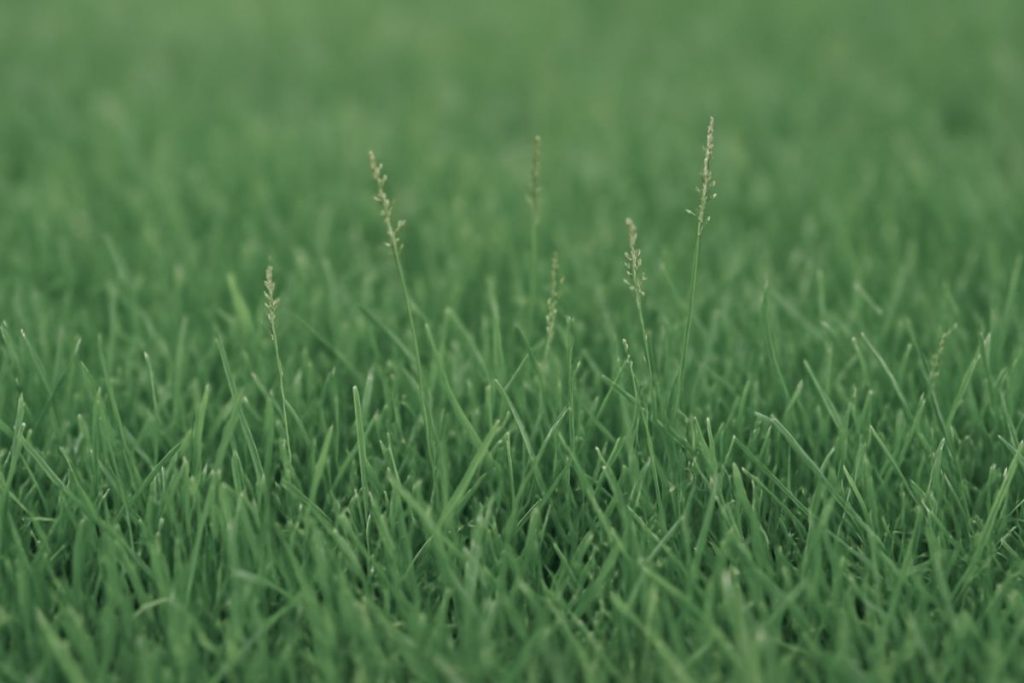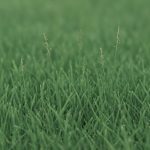Planting Zoysia grass seed is a smart choice for homeowners seeking a durable, green lawn with minimal effort. Zoysia is a warm-season turf known for its dense, carpet-like growth and exceptional tolerance to heat, drought, and foot traffic. Unlike cool-season grasses, zoysia maintains a rich green color through summer with about half the water (roughly 1 inch per week) required by bluegrass or fescue. Its deep root system and spreading habit (stolons/rhizomes) create a thick mat that naturally suppresses weeds. While Zoysia goes dormant and turns brown in winter, it rewards a well-prepared soil and warm conditions with a resilient, luxurious turf in spring and summer.
Zoysia grass forms a lush, fine-bladed turf that resists weeds and thrives on minimal water when established. Its dense green carpet is ideal for sunny yards, sports fields or golf fairways (USDA zones 5b–11) where a tough, low-maintenance lawn is desired. In fact, studies show Zoysia lawns use about 50% less water than typical cool-season lawns, since Zoysia’s deep roots tap moisture efficiently.
Once established, Zoysia is highly disease-resistant and tolerates traffic well, making it perfect for families or pet owners. The main trade-offs are slow germination (2–3 weeks) and brown dormancy in winter, so patience and proper timing are key.
Why Choose Zoysia Grass Seed?
-
Drought Resistance: Zoysia’s thick roots let it survive with minimal irrigation. Research by the National Center for Turfgrass shows Zoysia needs only about 1″ of water per week during dry spells, compared to ~2″ for bluegrass or fescue. In extreme drought tests, some Zoysia swards survived up to 15 weeks without waterkrturfgrass.com. This makes Zoysia ideal for water-conscious gardeners.
-
Weed Suppression: Once established, Zoysia spreads vigorously through above-ground stolons and underground rhizomes, quickly filling bare spots. This dense growth naturally chokes out weeds and reduces thatch. University extension notes that a mature zoysia lawn forms a cushiony, weed-resistant turf with wiry, fine-to-medium blades.
-
Heat and Shade Tolerance: Zoysia thrives in full sun and high heat that would stress cool-season grasses. Certain cultivars (like Zeon and Innovation) also tolerate partial shade. Many varieties remain green and lush through the hottest summer months, only going brown after the first hard frost.
-
Wear Tolerance: Zoysia’s tough, low-growing habit and dense mat make it remarkably traffic-resistant. It holds up well on sports fields, playgrounds or heavily used lawns. Unlike fluffy fescue, you can walk and play on Zoysia even as it greys back in winter.
-
Low Maintenance: Zoysia requires less fertilizer than many grasses. In most regions a single spring feeding and an occasional fall application are enough. It thatches naturally but infrequently; annual dethatching or coring is usually sufficient. Its slow growth rate (especially varieties like Royal) means you mow less often.
These attributes make Zoysia grass seed a great investment for a green, hassle-free yard. The table below highlights key strengths of top varieties (seed and sod options) to help you choose:
| Variety & Source | Key Strengths |
|---|---|
| Scotts Turf Builder Zoysia Grass Seed (seed + mulch blend) | Premium mix with moisture-locking mulch; 99.9% weed-free; covers ~2,000 sq.ft. for overseeding; forms dense, medium-blade turf tolerant of heat and light shade. |
| Zenith® Zoysia (Patten Seed) | Dark green, medium-textured grass; adapts to sun or light shade; tolerates extreme heat and cold; very drought-resilient (goes dormant but rebounds after rain). Good for broad zones (South up to transition zone). |
| Meyer (Korean) Zoysia | Cold-hardy Z. japonica often called Korean lawngrass; bred to survive hard winters. Most popular for northern areas. Forms a fine, dense green turf under proper care. |
| Zeon® Zoysia (Fine-textured Z. japonica) | Extremely fine-bladed and soft (“barefoot grass”); excels in full sun yet tolerates moderate shade. Highly disease- and insect-resistant. Used on Olympic golf courses for its quality. |
| Emerald Zoysia | Popular hybrid (Z. japonica × Z. tenuifolia) known for emerald-green, carpet-like turf. Fine texture gives a uniform, manicured look. (Needs full sun and consistent moisture for best results.) |
| Empire Zoysia | Medium-blade grass with vibrant green color. Favored in the Southeast for good performance on sandy soils. Durable and fast-spreading; tolerates heat. Requires slightly more watering than finer zoysias. |
| Innovation Zoysia (Seed World) | Bred for transitional climates (USDA zones 5b–10). Fine texture, with excellent cold hardiness, shade tolerance and drought resistance. Ideal for northern users who want a Zoysia with extra winter survival. |
| Palisades Zoysia (Texas A&M release) | Coarse-textured variety noted for extreme drought tolerancekrturfgrass.com. Performs well in heat, handles cold better than many coastal zoysias. Also tolerant of moderate shade and salt (good near ocean)krturfgrass.com. Can be mowed very short (½”) for golf-like fairways. |
| Zorro™ Zoysia | Fine-bladed, dark green grass rated #1 Zoysia in the worldkrturfgrass.com. Very lush and dense; maintains excellent color. Often used in premium turf installations (golf courses, high-end lawns) due to its look and wear resistance. |
| Royal Zoysia | Ultra-fine, dense, slow-growing grass. Offers a soft, carpet-like feel and outstanding shade tolerance. Its slow growth means less mowing. Very drought- and wear-tolerant, with deep roots that conserve water. |
How to Choose the Right Zoysia Grass Seed?
Selecting the best Zoysia seed depends on your climate, yard conditions, and goals:
-
Climate/Zone: Match variety to your USDA zone. Fine-bladed Zoysias (Zeon, Royal) prefer the southern half of the U.S. (zones 7–11) and milder winters, whereas hardy types like Meyer or Innovation suit cooler transition zones (as low as 5b). If you live in cold zone 6 or below, opt for cold-tolerant cultivars (e.g. Meyer, Zenith).
-
Sun/Shade: Most Zoysias thrive in full sun (6+ hrs/day). For partly shady yards, choose shade-tolerant varieties like Zeon, Royal or Innovation. Avoid deep shade (under heavy trees), as even shade-friendly Zoysias need some sun.
-
Soil & Usage: Zoysia prefers well-draining soil. If your lawn sees heavy traffic, select a durable type like Empire or Zenith (medium texture) or Zorro (fine texture but tough). For ornamental lawns where softness and appearance matter, consider fine types (Emerald, Zeon, Royal). Coastal areas may benefit from salt-tolerant varieties (Icon or Palisades).
-
Coverage vs. Project Size: Seed bags list coverage by weight. For large areas, bulk-seed Zenith or Empire can be cost-effective (covers ~1000 sq.ft per pound). For smaller patches or hobby projects, pre-mixed seed-and-mulch (Scotts or Pennington brands) make planting easier and reduce watering needs.
-
Budget: Pure seed is cheaper but slower. Seed/mulch blends (like Scotts or Pennington) cost more per pound but cut down on evaporation and germination issues. Decide how much effort vs. money you want to invest.
How to Plant and Care for Zoysia Grass Seed?
Soil Preparation and Seeding
-
Test and Prep Soil: Aim for a pH of 6.0–7.0. Conduct a soil test and amend as needed (lime or sulfur). Till or aerate to loosen the top 3–4 inches and remove weeds or debris.
-
Best Timing: Plant Zoysia grass seed in late spring/early summer, when soil temperatures consistently exceed 65°F. In Maryland and similar climates, mid-May to June is ideal. Cold soil will stall germination.
-
Apply Seed: Use a broadcast or drop spreader to apply 1–2 lbs per 1,000 sq.ft. of seed. Lightly rake the surface to ensure seeds contact the soil (about 1/8″ deep). Avoid burying seed too deep.
-
Add Mulch (Optional): Covering seeds with a thin layer of straw or compost can conserve moisture, but avoid thick layers that block light. Some brands (Scotts/Pennington) include mulch in the mix.
-
Watering: Gently water the area immediately after planting. Keep the soil consistently moist (not flooded) until germination. This usually means watering lightly once or twice daily to maintain about ¼–½″ of moisture.
-
Germination: Expect seedlings to appear in 10–21 days under optimal conditions. Patience is key – Zoysia germinates more slowly than ryegrass or fescue. Do not let seedlings dry out during this period.
-
First Mowing: Wait until the new grass reaches about 2–3″ high. Then mow down to ~2″ (removing only the top third of blade length). Sharp mower blades and a high setting protect tender young grass.
-
Fertilize: About 4–6 weeks after germination, apply a starter lawn fertilizer (e.g. 10-10-10) to encourage root growth. After that, feed Zoysia lightly 1–2 times per year (early spring and/or fall) with a balanced fertilizer. Over-fertilizing can cause thatch or pest issues.
-
Ongoing Care: Mow regularly, keeping height at 1.5–2″ for home lawns. Zoysia tolerates mowing lower (1/2″) for athletic fields or golf, but home lawns usually stay at 2″ for density and healthkrturfgrass.com. Water deeply but infrequently once established (about 1″ per week) to encourage deep roots.
-
Thatch Management: Zoysia naturally forms a light thatch layer. Aerate or dethatch annually if thatch exceeds 1/2″ to prevent suffocation of the turf.
Common Pitfalls to Avoid
-
Cold Soil: Planting when soil is below 65°F will delay or prevent sprouting.
-
Uneven Watering: Dry spots will kill seedlings. Keep moisture uniform and gentle to avoid erosion.
-
Overseeding & Underseding: Putting too many seeds can cause waste and disease; too few leads to bare patches.
-
Patience: Don’t expect instant results. Full lawn thickening often takes 30–60 days.
Proper watering and care are crucial during germination. This close-up of grass seed heads in sunlight illustrates how Zoysia begins growth – tiny green shoots emerging from seed. Maintain warm, moist conditions for at least 2–3 weeks so seedlings can establish strong roots.
FAQs
-
Q: How long does Zoysia grass seed take to germinate?
A: Under ideal warm conditions (soil ≥65°F), Zoysia typically germinates in 14–21 days. Maintain steady moisture; if the soil cools or dries out, germination will stall. -
Q: Can Zoysia grow in the shade?
A: Yes, some types (like Zeon®, Royal or Innovation) tolerate partial shade (about 4–6 hours of sun). However, no Zoysia thrives in deep shade – for full shade areas, consider a groundcover or fescue mix. In general, Zoysia prefers at least moderate sun for best density. -
Q: Is planting Zoysia seed better than sod or plugs?
A: Seed is more affordable but slower. Expect up to 60 days for full cover from seed. Sod or plugs establish much faster (instant green), but cost more and require more labor. Seed is great for large lawns or overseeding existing turf, while sod/plugs are used for quick results or small areas. -
Q: How do I maintain a Zoysia lawn?
A: Once established, treat Zoysia as a low-input turf: mow to 1.5–2″, water deeply (~1″/week) when needed, and fertilize sparingly (generally only spring and possibly early fall). Annual dethatching or aeration keeps the root zone healthy. Zoysia is self-choking on weeds, but hand-pull any invasive plants quickly. -
Q: When should I plant Zoysia seed?
A: The best window is late spring to early summer. Plant when daytime air is warm and nights are above 60°F, typically mid-May through June in most areas. This ensures soil is warm enough (≥65°F) for good germination. Planting too late risks frost, and too early often yields spotty sprouting. -
Q: My Zoysia grass seed isn’t sprouting. What went wrong?
A: Common issues are cold soil or uneven moisture. If soil temp drops below ~65°F, seeds lie dormant. Also, if water dries out or washes seeds away, germination fails. Double-check seed depth (should be ≤1/8″), keep the area uniformly moist, and be patient—the first sprouts can be sparse and slow.
Conclusion
Zoysia grass seed offers a truly low-maintenance path to a dense, green lawn in warm-season regions. By choosing one of the top varieties above (from fast-establishing Scotts mixes to hardy Zenith or shade-tolerant Zeon) and following proper planting steps, nearly any homeowner can achieve a luscious, durable Zoysia lawn. Remember to seed at the right time, keep the new turf consistently moist, and use Zoysia’s natural strengths drought resistance and weed suppression to your advantage.
Whether you’re overseeding a patchy yard or starting fresh, this guide and our top-10 seed picks (backed by expert advice and research) will help you make an informed choice. Enjoy your low-maintenance Zoysia grass seed lawn this season!


